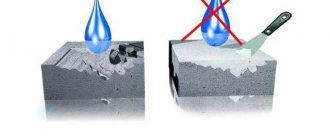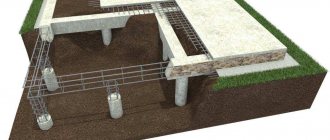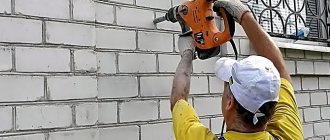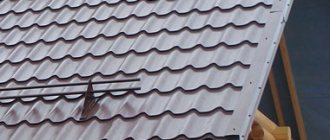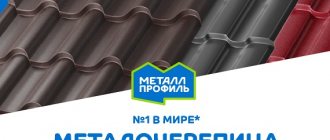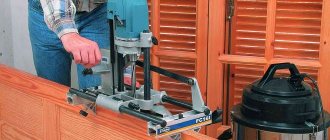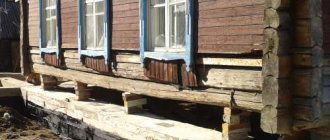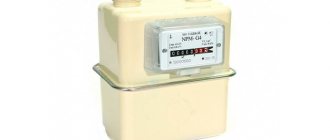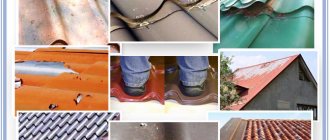- March 20, 2020
- Construction
- Yana Mylnikova
Concrete is a man-made building material. To obtain it, water should be added to the cement-sand mixture, as well as other ingredients. In order for the concrete to be of high quality, strict proportions must be observed when preparing the solution. Otherwise it will not harden to design or be durable.
Types of concrete
Very often, many people ask what brand of concrete is needed for the foundation. The answer to this question depends on what kind of building is being built (single-story, multi-story). The following types of concrete are used for external construction:
- Silicate. It is obtained from lime and silicon. In some cases, quartz is added to it. Sand is used as fillers.
- Perlite concrete. Perlite is used for its production. Very often this material is used to create fences.
- Reinforced concrete. It can be obtained by combining concrete with metal reinforcement. The material is used in any climate zone. It will not lose its properties even in regions where the air temperature reaches +60 degrees Celsius, as well as in areas where it can be up to 45 degrees below zero.
- Tufobeton. Its main filler is volcanic tuff. This material can be used to build walls and also make floor slabs.
To decide on a specific type, it is necessary to take into account the operating conditions of the structure being built.
To correctly determine what kind of concrete to fill the foundation with, you need to understand what it consists of. The material under consideration includes the following main components:
- Fillers. These include: pebbles, crushed stone and sand.
- Knitting elements. It can be cement or lime.
- Water.
With a certain combination of these components, it will be possible to create a wide range of different solution options. To give concrete certain properties, additives are additionally used. This allows you to significantly expand the scope of its application.
How to cook with your own hands and in a concrete mixer
If you plan to build a small building that will require a minimal amount of concrete, it is better to prepare it yourself. To do this, you need a small container (bathtub or basin) and a shovel. Take 1 share of cement (500 m), 2.5 shares of gravel and sand. All ingredients are mixed. Make a well in the center of the mixture and pour some water into it. The mixture is gradually stirred and water is added as needed. The consistency of the finished solution should be fluid, not liquid.
For the mechanized method of preparing the solution, a concrete mixer is used. To prepare 1m³ of solution you will need to take 300 kg of cement (M 500), 650 kg of sand, 1150 kg of crushed stone and approximately 160-185 liters of water.
First, sand is poured into a concrete mixer, and then cement is gradually added. The machine turns on, after mixing the entire amount of cement and sand, little by little water is added to the concrete mixer. After the mixture has the consistency of thick sour cream, crushed stone is added to the machine (in portions). Thus, pour all the components into the machine and mix thoroughly.
The solution should be rotated in the machine for 2-3 minutes until it is completely ready.
Strip foundation
It is a closed loop made of reinforced concrete beams. It is erected under each load-bearing wall of the structure. On this basis, you can build absolutely any structure - from a one-story wooden house to a high-rise monolith. Strip foundation is the most commonly used foundation for the construction of cottages and summer houses.
There are two main types of it:
- Monolithic.
- Made. It is formed from blocks, panels or both.
In the prefabricated version, the blocks are fastened together using cement or reinforcement.
Most often, a monolithic foundation is constructed. At the same time, reinforcement cages are knitted. The structure is then filled with concrete mixture. Thanks to this, the monolithic base is inseparable.
Made
The technology for constructing a prefabricated foundation is similar to a strip foundation. During its construction, special blocks (FBS) are used, which are delivered ready-made directly from the factory or construction base. They significantly speed up construction processes, but require the use of lifting equipment and the organization of access roads to the construction site.
The blocks are laid using concrete mixture. For installation, you can use lightweight concrete that has an average density of 500 to 1800 kg/m³. It is enough to buy the M100 brand and apply it to the slabs in several layers.
Concrete grades
This indicator is a guarantee of the strength of the future structure. What brand of concrete is needed for the foundation? The answer to this question depends on the type of structure that is being built (bridge, high-rise, one-story warehouse, etc.). Before purchasing concrete, you must pay attention to its brand. It is designated by the letter "M". The number that is indicated along with it (from 50 to 1000) shows how much weight one square centimeter of concrete of this particular brand can withstand. In another way, we can say that this is an indicator indicating the compressive strength.
Very often people ask, how big are the differences in the brands of concrete used for the foundation? This indicator must be selected based on the design of the future building. There is a certain correspondence between the strength class and grade of concrete. In GOST 26633-91 it is displayed in the following table:
| Concrete strength class | Brand |
| B3.5 | M50 |
| AT 5 | M75 |
| B7.5 | M100 |
| AT 10 | M150 |
| B12.5 | M150 |
| B15 | M200 |
| IN 20 | M250 |
| B22.5 | M300 |
| B25 | M350 |
| B27.5 | M350 |
| B30 | M400 |
| B35 | M450 |
| B40 | M550 |
| B45 | M600 |
| B50 | M700 |
| B55 | M750 |
| B60 | M800 |
| B65 | M900 |
| B70 | M900 |
| B75 | M1000 |
| B80 | M1000 |
GOST also states that there is another indicator of this material - its workability. Concrete mixtures are hard, super-hard and flexible. All this must be taken into account to decide what grade of concrete is needed for the foundation. Let's briefly describe the most popular ones.
M200
This brand of concrete is quite suitable for the foundation of a one-story house. In this case, a prerequisite is the absence of a groundwater level located too close to the surface.
Various floor slabs and piles are made from this material. In addition, it is used to fill the foundation in frame-panel houses.
M350
This brand of concrete is ideal for strip foundations. This type of building material is the most commonly used. Its main advantage is frost resistance, as well as durability. Concrete of this grade is used for the construction of the foundations of various multi-story structures. In addition, it can be used to create ceilings, consoles, and other complex structures. If construction is carried out on clay soils, as well as in areas where groundwater comes close to the surface, it is recommended to use concrete of this particular grade.
M400
This building material is much stronger than those described above. This brand of concrete is ideal for strip foundations. It is used in the construction of high-rise buildings.
Such concrete is produced from cement and specially selected fillers. It is also used for the construction of one-story houses. If you use M400 concrete in the construction of high-rise buildings, then their number of storeys should not exceed 20.
Trench preparation
The larger the house, the wider the trench.
According to the previously designated boundaries, trenches are dug. Depth – below the soil freezing level (from 70 cm to one and a half meters), width – depending on the size of the future building. The more massive the building, the greater the load expected on the foundation, and, therefore, the width of the trenches should be wider. For ordinary one-story buildings, the optimal width is about half a meter.
Next, you should compact the bottom of the trenches well and level them. The next stage is preparing the flooring for the foundation, which consists of two balls:
- layer of sand - about 15 cm - preference is given to river sand;
- crushed stone layer – 20 cm, stones fraction 20/40 mm.
The sequence of layers must not be disrupted; each of them is carefully compacted - it is convenient to use a vibrating plate for compaction.
Return to contents
Material selection criteria
We continue to consider what grade of concrete is needed for the foundation. Very often, due to lack of finance, low grade material is chosen. It is affordable, but it contains a small amount of cement. Therefore, the strength of such concrete is low. Professionals recommend not saving on this material, because the strength of the entire structure depends on it.
For the foundation it is recommended to use concrete grades M400 and M350. This is due to the fact that this material is highly dense. Therefore, the base always remains dry.
If you decide to save on concrete, it is recommended to purchase additional waterproofing for the foundation. This will protect the base from high humidity that occurs during rainy periods or floods.
But this rule does not apply to multi-story buildings. Concrete grade M200 and lower cannot be used in the construction of high-rise buildings (even two-story buildings).
Before choosing a material, it is imperative to familiarize yourself with the properties that it should have. These include the following:
- fire resistance;
- hygroscopicity;
- density;
- fluidity;
- frost resistance.
Making your own solution is not too difficult. But at the same time, you need to understand that if you have no experience in this work, it is better to entrust it to professionals.
Saving Tips
Construction work itself is expensive, so it is important to be able to save money without risking the quality of materials. And yet, some recommendations will help to fill the foundation at minimal cost:
- The most expensive part of the work is digging trenches and the process of pouring concrete. The construction of trenches is a difficult and important stage, so it is not advisable to save money. As for pouring concrete, the help of handymen is not necessary. The process is dirty, but the technique is not difficult. Two or three people can carry out the filling work in half a day, and you will save a good amount of money.
- If you are pouring a strip foundation, you can reduce the cost of deepening. A light, small house (for example, wooden) can be built on a shallow strip foundation.
- You can reduce the thickness of the slab base, but be sure to add stiffeners.
- When pouring a pile foundation, you can only save on labor - do not take risks and do not experiment with materials and technology, this type of foundation itself is already less stable than other types.
- In some cases, you can save money by using fiberglass reinforcement.
Features of the composition
Concrete is not just a mixture of cement and water. It must contain the necessary fillers. In addition to water and cement, gravel, crushed stone and small broken red bricks should be added to concrete. The proportions of the components depend on the brand of concrete, as well as on the purpose of the solution itself. The cohesion coefficient will be higher if there are more uneven components in the aggregate. River sand is not suitable for manufacturing. Therefore there is no need to use it.
It is recommended to use only medium-grained sand. River, as a rule, fine-grained. In addition, it contains a huge amount of clay particles. This significantly reduces the strength of the foundation.
When choosing crushed stone or other filler, you should give preference to materials whose fraction is from 6 to 20. If you plan to pour a foundation, then this figure should be from 25 to 40.
Lightweight concrete contains a small amount of crushed granite or gravel. This material is not suitable for foundation foundations. As for masonry mortar, it is made without any fillers.
Very often people ask how much concrete is required for a foundation. What are the standard proportions of its composition? The answer to the first question depends on the base area of the object being built. For grade M400 crushed stone, sand and cement are required in a ratio of 4.8:3.8:1. For M200 concrete, the proportions are shown in the photo.
To prepare a high-quality concrete solution, the following materials are needed:
- Sand.
- Cement.
- Water.
- Aggregate.
- Softener.
Additives can also be used to increase frost resistance or shorten the hardening period.
Main components of homemade concrete mixture
If the mixture will be produced directly on the construction site on your own, you must adhere to the concrete manufacturing technology so that it obtains the necessary characteristics.
Cement
There are several types of cement suitable for making concrete for foundations:
- quick-hardening Portland cement;
- pozzolanic cement;
- Portland slag cement;
- Portland cement.
The most commonly used option is Portland cement. It is quite economical and has satisfactory properties. Other options are used for special requirements. Portland cement is purchased grade M400 or M500.
Sand
The sand must be homogeneous, without impurities and debris . It is better to use river sand - it is cleaner. An important parameter of sand is grain size.
When using M300 cement, you need to purchase fine sand with a particle size of about 2.5 mm. For a mixture based on stronger cement, coarser sand is needed - with a grain size of 3.5 mm or more.
Gravel or crushed stone
The base filler can be gravel or crushed stone . It is better to use gravel, as it has an optimal strength-to-price ratio. The size of the filler fractions depends on the dimensions of the foundation.
Large foundation strips are filled with concrete with a filler fraction of 10-20 mm. When arranging a shallow foundation, the gravel should be finer.
Water
Much depends on the quality of the water. It must meet the requirements of GOST. It should contain less than 5000 mg of salts per liter, no more than 2700 mg of sulfates, low acidity is needed.
You can use technical or drinking water . With an optimal salt composition, sea water is suitable. Sewage and swamp water cannot be used to create a foundation.
Required Tools
To prepare a concrete solution, the following tools may be required:
- Concrete mixer. An electric one is best, but if you don’t have one, you can use a regular manual one.
- Container for mixing the solution. A regular trough will do. If a concrete mixer is used, the solution is mixed in it.
- Buckets. They will be needed to deliver water and any other components.
- Shovel It is needed to mix the solution.
- Large sieve. It is necessary in order to filter out any clogs or debris caught in the sand.
Very often people ask how much concrete is required for a foundation. What are the standard proportions of its composition? The answer to the first question depends on the base area of the object being built. On average, about 330 kg of cement is used per 1 m3 of solution. To prepare high-quality concrete, crushed stone, sand and cement are required in a ratio of 5:3:1.
Self-cooking
During the preparation process, it is necessary to mix the components in the correct proportions, taking into account the brand of cement used:
| Cement brand | Cement | Sand | Gravel | Water |
| M100 | 1 | 4,1 | 6,1 | 1,1 |
| M200 | 1 | 2,5 | 4,2 | 0,9 |
| M300 | 1 | 1,7 | 3,2 | 0,65 |
| M400 | 1 | 1,1 | 2,4 | 0,5 |
| M500 | 1 | 0,8 | 1,5 | 0,4 |
Mixing in a concrete mixer
If you need to mix more than 50 liters of concrete at once, you need to use a concrete mixer.
First, use a measuring bucket to pour dry components into a concrete mixer , maintaining the correct order - cement, sand, crushed stone.
All this is mixed dry for several minutes. Next, water is poured in and everything is mixed together for 12-16 minutes. The finished concrete mixture is moved into special containers and supplied to the pouring site.
Required Fillers
As noted above, to prepare the solution, it is necessary to use sand of a certain fraction. In some cases, coarse crushed stone and gravel are added to the solution. If plastering and masonry work is planned, only fine sand should be used.
Currently, manufacturers offer this material of river or ravine origin. It contains a large amount of clay particles, as well as other impurities. Therefore, it is not recommended to buy such sand for building a foundation.
As for peat, glass, soil and many other similar substances, they should never be used.
Various additives
To obtain a high-quality solution, additionally add:
- Thinning additives. They help make the mixture frost-resistant and also minimize the amount of water used.
- Plasticizer. This additive improves fluidity. It makes it possible to create a shape of any configuration from concrete. In addition, the plasticizer has a positive effect on the laying properties.
- Hardening accelerator. Thanks to it, the mixture hardens faster.
- Aerating. They are used to reduce the amount of water, as well as to increase frost resistance and thermal insulation properties.
- Waterproofing, sealing and water-repellent agents that reduce the permeability of concrete.
These additives can be purchased at any hardware store. At the same time, you need to understand that you should not overdo it with them. They should be about 2% of the total mass.
However, there are substances that you can not buy, but make yourself at home. Some professionals use soap solution as additives. When using such drugs, it is recommended to adhere to a certain dosage. If the proportion is incorrect, the solution will be of poor quality.
Mobility of concrete
This indicator is denoted by the letter “P”. It talks about the degree of fluidity of concrete. The ease of working with the composition directly depends on this indicator. As for the numerical coefficient, the range varies from 1 to 5. The higher this indicator, the more liquid the composition.
In private construction, when laying out the foundation, it is necessary to use concrete with a mobility of 2 to 3. The most fluid compositions are used only in cases where it is necessary to pour a densely reinforced base. It is very convenient to work with such a solution. An important rule is that it is forbidden to add water to ready-made concrete to increase its mobility. In this case, the grade of the solution will decrease, and the final strength will decrease.
Scope of application of various grades of concrete
It's no secret that strip foundations are used in absolutely any construction technology. However, each brand of concrete has its own purpose:
- M150 for concreting terraces. This brand of concrete for the foundation of a fence is also used quite often.
- M200 is used for the construction of bases in low-rise construction, terrace walls, external and internal stairs. Concrete M200 is also used for the foundation of blind areas of buildings.
- M300 is suitable for the construction of foundations for attic and two-story cottages, as well as floors, monolithic partitions, walls and stairs. This brand of concrete is ideal for a garage foundation.
- M350 is used under difficult operating conditions of the facility being built.
- M400 is ideal for the construction of coastal foundations, as well as when performing work in earthquake-prone regions.
- M450 and M500 are used in the construction of various tunnels, sewer systems, and bridges.
It is important to know!
The slab foundation is also called a solid, floating or Swedish slab. Shallow solid foundations are very often used in low-rise housing construction. The laying of this foundation is carried out on literally any soil. Thanks to the slab, the cost of work is significantly reduced, and it is ideal for literally any structure. In Russia, reinforced concrete foundations of this type have only been used for a few decades, while in Europe they have been used for a long time.
Thanks to the complex production of the slab, it is possible to obtain an insulated, effective foundation with general engineering systems in a short time. The built-in stove has a large number of advantages, i.e. it has a fairly high load-bearing capacity and is simple in design. This foundation will not be subject to large deformations after changes in the condition of the soil under the building. Even if the soil is difficult, the slab will be the most rational, only here you should take into account which concrete for the foundation of the house will be the best.
